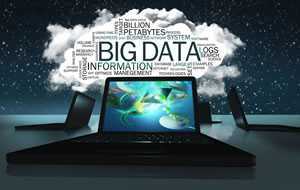The technology and service trends IT and admin should focus on for 2015-16.
 It’s back to school time, and IT teams at college campuses nationwide are preparing to handle the onslaught of technology needs of faculty and students alike—but what should IT and admin prioritize?
It’s back to school time, and IT teams at college campuses nationwide are preparing to handle the onslaught of technology needs of faculty and students alike—but what should IT and admin prioritize?
Many technology departments will have spent the slower summer months upgrading existing infrastructure and rolling out new technology solutions. After all, with a growing debate focused on the role of advanced education and its value to our nation’s workforce, colleges and universities are under pressure to show their significance and return on investment to today’s college students.
As innovative services continue to play a sizeable role in allowing institutions to harness the power of rapidly evolving technologies to benefit students and institutions alike, here are four trends that will be major ground shifters in the upcoming school year:
1. Big Data Changes Everything
Data analytics dominates the discussions around research, smarter governing and the Internet of Things. One emerging big data and analytics opportunity for colleges and universities is to help address, and be ultra-competitive in response to, recent Administration priorities.
Last December, the White House announced that by the start of this school year, the Federal government will rate colleges on access, affordability and student outcomes. This new approach will assess student achievement at institutions currently receiving Federal student aid and will use this information to determine future Federal investments.
However, data analytics plays other roles beyond funding allocations. Data collected on former students—including career paths, salary history, geographic distribution, and success measures for current students will come into play for recruitment and retention efforts. Student retention is top of mind at all colleges and universities, and at some universities an increase as small as 1 percent in freshman retention rate equates to $1 million in revenue recognized. The impact of data analytics across the higher education spectrum will be a major focus for this school year, and IT teams need to be prepared to stay ahead of the data tsunami.
(Next page: Trends 2-4)
2. Public-Education Partnerships
The Internet of Things creates data analytics opportunities in other aspects of higher education as well. Colleges and universities have long been the focus of advances in research and the ability for state and local governments to partner with schools to support public policy research and development will continue to grow. Across the country, we are seeing more state and local governments empowered with the access to information provided by, for example, sensor data imbedded in roadways. That type of information can help shape decisions on transportation projects. Turning to university research departments to help them analyze the data for use in shaping public policy directives will be a burgeoning area this year.
3. Campus Safety
Last school year began with a number of high profile campus safety incidents, highlighting the need to re-evaluate the way schools are providing a safe campus community for students and faculty alike. The use of cameras and video surveillance of public university spaces, and the ability to store and catalog countless hours of video from these devices, becomes more vital in being able to trace a student’s movement across the campus or to recreate an event.
The momentum toward wearable cameras following events last year in Ferguson, Missouri, and New York City will ultimately find a footing on college campuses as well. Collaboration between university security staff and local law enforcement stresses the need to piece together relevant pieces of footage along a specific timeline and reinforces the requirement that meaningful streams of video be readily retrievable. Colleges and universities will need to establish their video storage systems with an eye to cost and accessibility, and the controlled use of cloud storage will make proper storage and accessibility a prime focus this year.
4. BYOD
Colleges and universities continue to face shrinking budgets. One ray of light has been the trend for students and faculty to Bring Your Own Device to campus. The use of BYOD requires schools to find ways to securely deliver content, apps and services through their network, and this leads to other saving measures, such as cutting printing costs by making documents available in the cloud.
However, the use of BYOD is not without other concerns, most significant among them is the protection of privacy and data security. More end users mean more susceptibility to viruses or malware, and IT departments need to have security systems in place to prevent their spread across the entire network. They also need to make certain that the school’s wireless network can support and provide adequate coverage across all mobile providers to deliver a seamless user experience.
None of these trends will make it easy on IT departments to keep up. But staying ahead of these will be essential if they are to meet the growing needs of students and faculty, and ensure that this school year is a successful one for the campuses they serve.
Bob Burwell is the Chief Technology Officer of State, Local Government and Education for NetApp.
- 25 education trends for 2018 - January 1, 2018
- IT #1: 6 essential technologies on the higher ed horizon - December 27, 2017
- #3: 3 big ways today’s college students are different from just a decade ago - December 27, 2017





